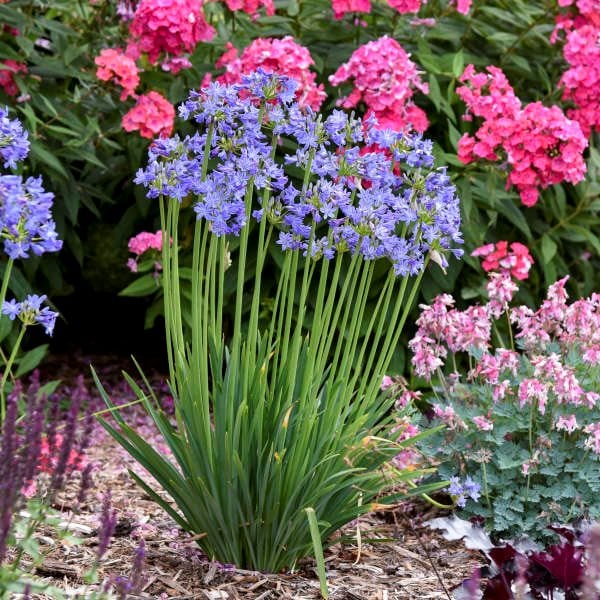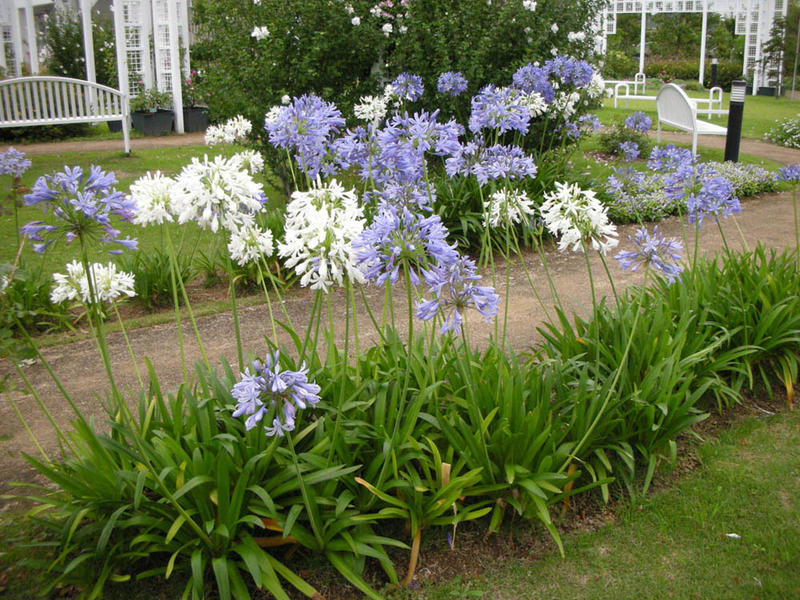Seasonal Agapanthus Care: Preparing for Winter and Summer season
Seasonal Agapanthus Care: Preparing for Winter and Summer season
Blog Article
Mastering the Art of Agapanthus Treatment: Essential Actions for Healthy Growth and Vibrant Blossoms
In the world of gardening, the growing of agapanthus stands as a gratifying venture for those that seek to nurture these sophisticated flowering plants. With their striking blooms and stylish foliage, agapanthus has actually recorded the focus of gardeners worldwide. However, achieving ideal growth and vivid blossoms requires a nuanced technique that encompasses numerous essential steps. From choosing the right selection to grasping trimming methods, the journey towards growing thriving agapanthus plants is complex and holds the essential to opening the complete possibility of these botanical gems.

Selecting the Right Agapanthus Variety

When choosing the appropriate Agapanthus variety for your garden, think about factors such as environment suitability, flower shade, and development routine. Agapanthus, typically called Lily of the Nile or African lily, is available in a selection of colors ranging from shades of purple and blue to white. Pick a flower shade that matches your existing yard scheme to produce a harmonious landscape. Additionally, take into consideration the environment in your area to ensure the Agapanthus selection you pick can flourish in your particular conditions. Some ranges are extra tolerant of cold temperature levels, while others like warmer environments. Understanding the development behavior of different Agapanthus ranges is essential for correct positioning within your garden. Some varieties have a clumping development habit, suitable for boundaries or containers, while others have an even more spreading nature, appropriate for ground cover or mass growings. By carefully evaluating these aspects, you can pick the perfect Agapanthus range to boost the charm of your yard.
Perfect Planting Conditions
Considering the optimal environmental requirements is important for effective Agapanthus farming. Agapanthus thrives in well-draining dirt with a slightly acidic to neutral pH level. When growing, select an area that gets full sunlight to partial shade. In hotter environments, providing some afternoon color can avoid scorching of the leaves. Agapanthus plants are sensitive to cold temperature levels and ought to be shielded from frost throughout winter months.
To ensure healthy development and vibrant flowers, plant Agapanthus bulbs at a depth of about 2-4 inches and area them 8-12 inches apart. Mulching around the base of the plants helps retain moisture and reduces weed find this growth.
Watering and Fertilizing Tips
Maintaining correct dampness levels and offering crucial nutrients are vital aspects in the care routine for Agapanthus plants. When it comes to sprinkling Agapanthus, it is essential to strike an equilibrium. These plants favor consistently wet soil however are susceptible to root rot if overwatered.
Fertilizing Agapanthus is crucial for advertising healthy review growth and respected flowers. Use a well balanced fertilizer, such as a 10-10-10 formula, in the early springtime as new growth emerges. Repeat this application every 6-8 weeks throughout the growing season. Prevent too much fertilizing, as it can result in lavish foliage at the cost of blossoms. Constantly adhere to the producer's guidelines for correct dilution and application methods. By following these watering and fertilizing ideas, you can guarantee your Agapanthus plants thrive and produce dynamic, long-lasting blooms.
Trimming Strategies for Agapanthus
Trimming Agapanthus plants at the proper times and with correct methods is vital for preserving their wellness and promoting optimal growth and blooming. The suitable time to prune Agapanthus is in late winter season or early springtime prior to brand-new development emerges. Start by eliminating any kind of dead or yellowing leaves near the base of the plant. Cut them as close to the ground as possible without harming the emerging shoots.
Deadheading spent flowers can additionally redirect the plant's power into producing more flowers rather than setting seeds. If you desire to gather seeds for proliferation, leave some blossoms to fully grown and completely dry on the plant.
Bear in mind to utilize tidy, sharp devices to make specific cuts and reduce the threat of presenting conditions. Agapanthus. Regular trimming will assist keep your Agapanthus looking healthy and balanced and neat while making sure a bountiful screen of attractive blossoms
Dealing With Usual Pests and Illness
After guaranteeing proper trimming strategies for Agapanthus, it is important to resolve typical parasites and conditions that can influence the health and vitality of these plants. One typical parasite that impacts Agapanthus is the Agapanthus gall midget.
Furthermore, Agapanthus plants can endure from root rot if they are grown in improperly draining pipes dirt. By being alert and taking timely activity against pests and diseases, you can aid your Agapanthus plants flourish and generate dynamic flowers. Agapanthus.

Verdict
Finally, understanding the art of agapanthus treatment entails selecting the right selection, supplying excellent growing conditions, correct watering and why not look here fertilizing, suitable pruning techniques, and resolving usual bugs and illness. By complying with these essential steps, you can ensure healthy growth and lively blooms for your agapanthus plants. Keep in mind to regularly keep track of and maintain your plants to advertise their overall well-being and longevity.
To guarantee healthy growth and lively blossoms, plant Agapanthus bulbs at a depth of regarding 2-4 inches and space them 8-12 inches apart. By complying with these watering and feeding tips, you can guarantee your Agapanthus plants grow and create vivid, lasting blossoms.
One common bug that affects Agapanthus is the Agapanthus gall midget. In addition, Agapanthus plants can experience from root rot if they are grown in improperly draining pipes dirt. By complying with these essential actions, you can guarantee healthy and balanced development and vibrant blooms for your agapanthus plants.
Report this page